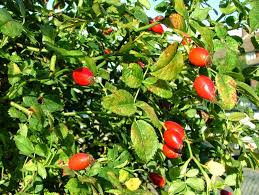Organic gardening relies on centuries of natural gardening principles to grow plants (and keep out insects) instead of depending on chemicals to do the same.
Permaculture organic gardening takes it one step further and grows food sustainably. The reason why it is so popular is because it is both low-maintenance and inexpensive too. Here are 6 steps to creating your own organic permaculture garden:
 Plants need as much sunlight as possible. To find the right place to place your plants, observe your garden and which parts receive most sunlight throughout the day. You can also check as to which areas have more shade throughout the day. Based on these observations, you can add plants based on whether they need more sun or shade.
Plants need as much sunlight as possible. To find the right place to place your plants, observe your garden and which parts receive most sunlight throughout the day. You can also check as to which areas have more shade throughout the day. Based on these observations, you can add plants based on whether they need more sun or shade.
2: Selecting plants
Avoid disease-ridden plants as this involves more work. Select plants that are not only suited to your area but serve more than one purpose. For example, a fruit tree can produce blossoms in one season and fruit in another. Apart from this, it also provides shade and add to the natural beauty of the garden too.
3: Using raised beds
There are a number of advantages to raised beds for both the gardener as well as the plants themselves. Whether it is improved usage of water, better air circulation, less physical effort and protection from chills, it’s worth considering. Apart from this, people living in small apartments can have their own garden when using raised beds.
4: Food for your Plants
Avoiding waste is a key element to permaculture organic gardens. As much as possible, re-use waste such as apple cores, coffee grinds and even eggshells. Use a compost bin to turn this waste into nourishment for plants.
5: Watering Plants
Using piped-in water resources is not sustainable and isn’t something that permaculture organic gardens would use. Instead, using groundwater and rainwater seems to be the approach used. Natural sources of water, if you will. Use rain barrels to collect water, if you must.
6: Pest protection
Just because you don’t use chemicals to protect your plants, that doesn’t mean you cannot get rid of pests. One way to deter pests is by growing plants that repulse them as they are attracted to other. In this way, it works as a natural deterrent to pests. Also, there are plants that enjoy a natural synergy where planting these two together means greater yield too.